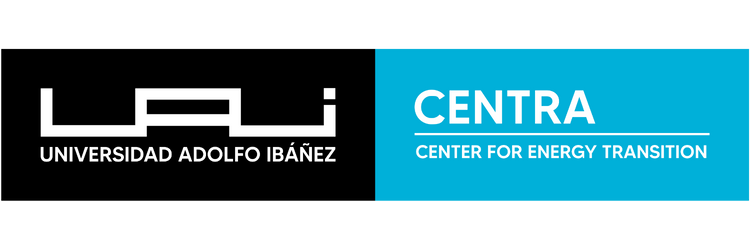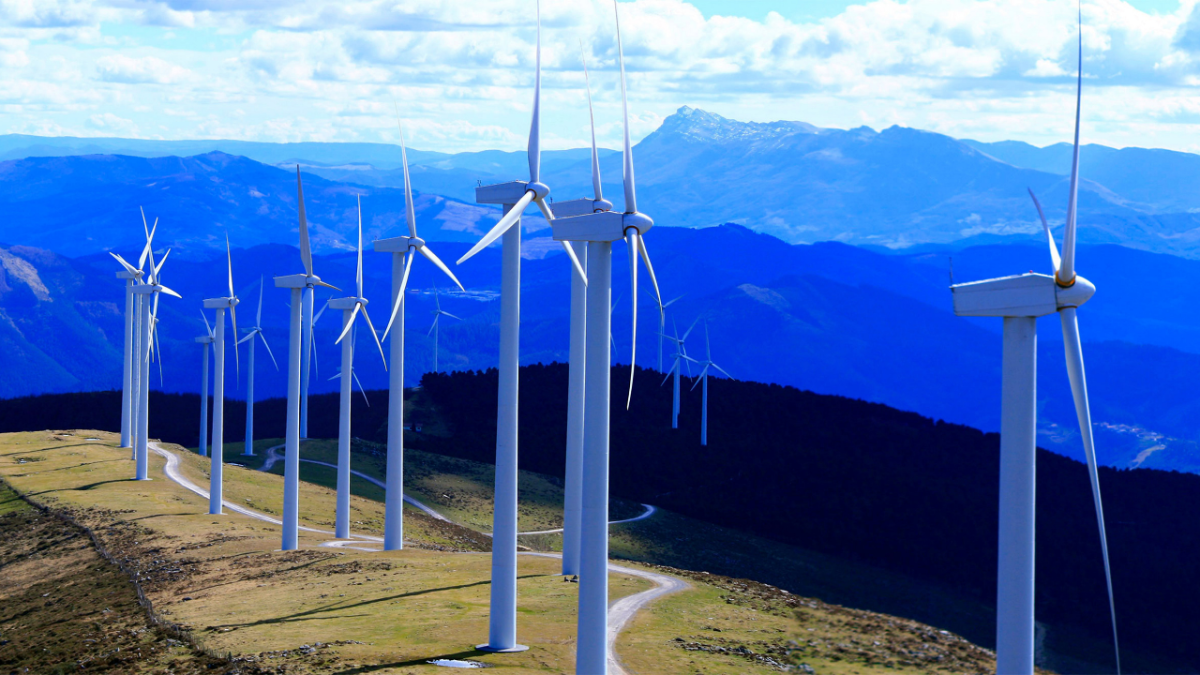Technological development in wind farms: Bursts of innovation
April 10, 2025
In the old windmills, used for centuries to grind grain or pump water, lies the genesis of modern wind turbines. As highlighted in an article by Endesa, the transition from the former to the latter began at the end of the 19th century, when the industrial revolution and advances in electrical engineering enabled new developments. From that stage to the present, the technological evolution of these structures has been enormous.
Looking back at the past decade, Carlos Silva, a researcher at the Energy Transition Center (Centra) of the School of Engineering and Sciences at Universidad Adolfo Ibáñez (UAI), states that the most notable advancement of wind turbines “has been the progressive and substantial increase in the size of their towers and blades, which allows them to access more consistent and intense winds. This results in greater power and energy available for generation in the turbine.”
In terms of environmental and social impact, he asserts that “the increase in the size of windmills has meant that new wind farms have fewer turbines, although the area affected by the presence of generators has expanded.”
Company Cases
Companies in the sector are investing significant resources to improve the efficiency and performance of their wind farms. With that goal, for example, Enel is constantly innovating in the handling of large volumes of real-time data. This is because the operation and maintenance of wind turbine fleets generate significant amounts of data from their various mechanical and electrical processes.
Pablo Arnés, operations and wind maintenance manager at Enel Green Power Chile, explains that the company “internally develops tools and algorithms that allow real-time monitoring of the machines’ status, linking different data and analyzing their behaviors to identify possible inefficiencies. In the short term, artificial intelligence will be able to make an important contribution in this area.”
He also highlights that Enel has incorporated “Direct Drive” technology in two of its wind farms located in the south of the country. Regarding its advantages, he explains that it helps to “significantly reduce the number of components installed at the top of the wind turbine, providing important construction benefits and simplifying the maintenance tasks performed at height. It is a robust and highly reliable solution for large wind farms, offering simpler and more efficient operation throughout its useful life. This is made possible by the integration of a synchronous generator directly connected to the rotor of the wind turbine.”
Another major player in this market, Engie Chile, is innovating in its Pemuco wind farm (165 MW), whose construction began last February. “There we have incorporated a wind turbine with a diameter of 182 meters, 7.5 MW of unit power, and a height of 140 meters. The large rotor diameter allows greater capture and conversion of wind energy, which is especially beneficial due to the wind conditions in southern Chile. The greater swept area of the rotor ensures more efficient production of clean and renewable energy. Furthermore, this project includes segmented steel tower technology, which enables the installation of the wind turbine at great heights, complying with local transport restrictions,” specifies Paulo Torres, Head Of Business Development GBU Renewables of the company.
Less Noise
At the same time, wpd is incorporating more efficient blades that reduce the noise generated by their impact at the base of the wind turbine. “And in the development stage of our new projects, we are implementing better modeling of noise propagation. For example, considering climatic variations that affect its transmission to a greater or lesser extent,” reveals Mauricio Henríquez, Public Affairs, Communities, and Environment Manager of the generator.
The company is also beginning to work on adaptive systems. The executive adds: “For instance, when the wind farm is operating at full capacity and, due to that, the noise standard is exceeded at the receptors, immediate contact is made with the operations center to reduce the turbines’ power. In this way, energy generation is efficient and respectful of communities and environmental regulations.”
Regarding the acoustic impact generated by wind farms, companies Ecometric and Innergex Renewable Energy are implementing the first full-scale artificial intelligence laboratory for these facilities worldwide, at the Cuel wind plant in Los Ángeles, Biobío region. The project will include real-time noise monitoring devices, based on AI, to optimize the operation and maintenance of wind turbines.
Meanwhile, Statkraft launched three wind farms in November 2024 in the commune of Litueche, O’Higgins region, with several innovations, such as the inclusion of serrated edges on each turbine blade to mitigate acoustic emissions. The project also reduced the number of wind towers on site (from 36 to 19), decreased the occupied area, and lessened the visual impact through, for example, underground connection of the facilities.
Continue Growing?
Regarding new technological improvements, Silva explains that currently “there is consensus that turbines should moderate their growth in size due to the higher costs they face and the logistical difficulties of transporting and installing parks with larger turbines.”
Taking a different stance, Pablo Arnés states that the wind industry is aiming for larger wind turbines, “seeking a greater swept area of their blades and, therefore, better conversion of the wind’s kinetic energy into electricity for the grid. This also allows energy to be produced at lower wind speeds, expanding the viability of placing wind farms near consumption centers, for example.”
For the Engie Chile representative, the integration of wind technology with smart grids is essential, as it “will enable more efficient and sustainable management of the energy supply, optimizing energy distribution and improving grid stability. Another important improvement will be the ability of wind turbines to interact with energy storage technologies.”
The Centra researcher also advocates for wind energy development to coexist with migratory and local bird populations. For this, he states, “various measures can be implemented, some in park design, avoiding installation in areas with high bird activity. Others are operational, such as reduced operations during migration periods and using radars to slow down the blades when birds are detected.”
With Storage
Renewable generation plants have increasingly incorporated energy storage systems for the electricity produced, “which would otherwise be lost as curtailment. In that sense, although wind energy has also experienced curtailments, its generation profile is different from solar energy, whose oversupply is defining curtailment hours. This allows wind generation plants to avoid, at least partially, the times when curtailment is instructed. In this context, storage systems are expected to continue being installed, primarily in solar parks and to a lesser extent in wind farms,” clarifies the Centra researcher from UAI.
Engie Chile, in particular, is constantly evaluating the option of including battery-based energy storage systems in each renewable energy project it promotes. Paulo Torres argues that “in the case of wind energy, initially incorporating storage makes less sense than for solar energy, because the latter is more constant and predictable. Also, in the current market, batteries store a lot of energy during the day, when there is more curtailment, while wind farms generate a significant portion of their energy at night. Nonetheless, it is an alternative under constant study and analysis and may be a solution for the natural intermittency of wind resources, considering long-term grid stability.”
For his part, the Enel Green Power specialist highlights that hybridizing wind projects with storage systems is already a reality in Enel Group’s operations. He gives an example: “At the beginning of 2024, we inaugurated the La Cabaña wind farm, which was complemented with battery energy storage systems (BESS), thus offering a range of complementary services. These projects not only optimize the production of renewable energy but also strengthen grid stability through frequency and voltage control, improving the reliability and flexibility of the electrical system.”
At wpd, they embrace this new reality and in all their operating projects, hybrid operation with storage systems is being considered. “Likewise, all our new developments, both wind and solar, include storage batteries. In fact, our closest project, the Trumao wind farm, which would be located in the communes of Frutillar and Llanquihue, Los Lagos region, includes them. This initiative is in the development stage and should enter the Environmental Impact Assessment System this year,” specifies Mauricio Henríquez.

